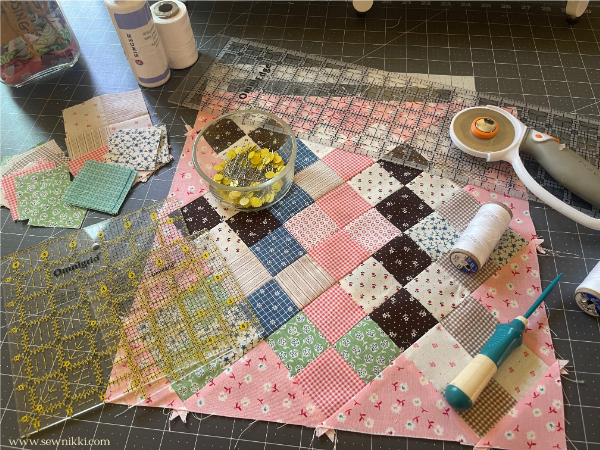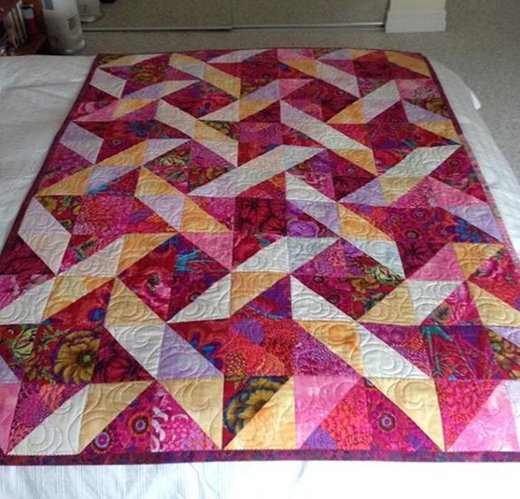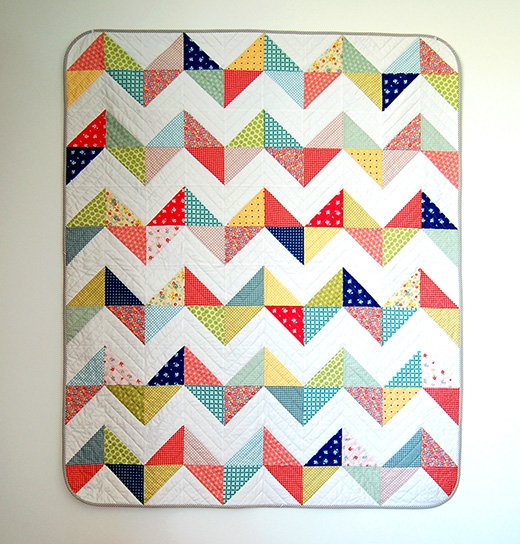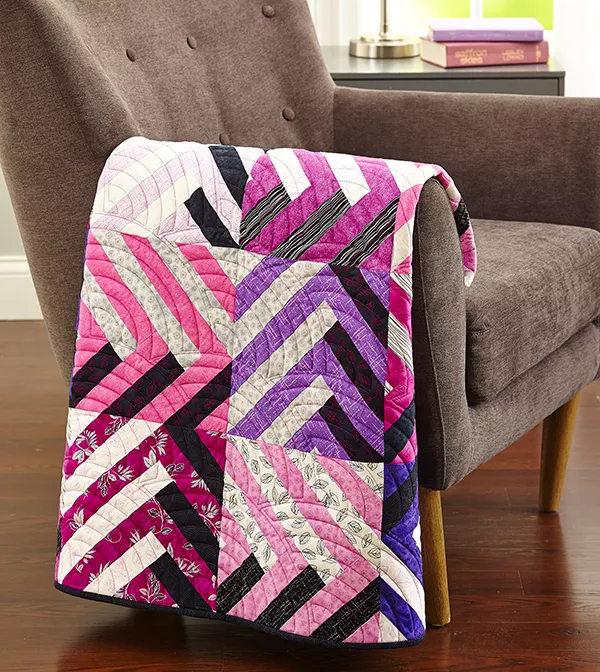Quilting is a beautiful, rewarding craft that allows you to create unique and practical items for your home. My journey into quilting began with a simple desire to make something beautiful and functional. In this guide, I’ll share the basics of quilting, from selecting materials to completing your first pattern, to help you start your quilting adventure with confidence.
Quilting can be daunting when you’re just starting out, especially if you have no prior sewing experience. But fear not! This guide is designed to walk you through every step, making the art of quilting accessible and enjoyable. Let’s dive in and explore the wonderful world of quilting together!
Beginner’s Delight: Easy Quilt Patterns to Get You Started
Quilting Essentials
Before starting your first quilt, it’s essential to understand some basic quilting terms and concepts:
- Block: A unit of fabric pieced together to form the quilt top.
- Half-Square Triangle (HST): A basic quilt block made by sewing two right triangles of contrasting colors.
- Sashing: Strips of fabric placed between blocks to create separation.
- Binding: A fabric strip that covers the raw edges of the quilt.
- Backing: The fabric on the backside of the quilt.
- Batting: The middle layer of the quilt providing warmth and insulation.
- Quilting: The process of stitching the layers of the quilt together.
- Scrappy: Using a variety of fabric scraps for a vibrant and eclectic design.
- Basting or Quilt Sandwich: Preparing the quilt top, batting, and backing for quilting.
- WIP: Work in progress.
Choosing the Right Materials
Selecting the right materials is crucial for your first quilt. Here are the essentials:
- Sewing Machine: Start with a basic model, like the Singer Start, and upgrade as you become more experienced.
- Rotary Cutter: For precise fabric cutting.
- Self-Healing Cutting Mat: To protect your workspace.
- Clear Acrylic Ruler: For accurate measurements.
- Fabric: Cotton is the easiest to work with and comes in a variety of colors and prints.
- Thread: Choose high-quality thread for durability.

Full Tutorial: Click Here
Step-by-Step Project Guide
Preparation
- Set Up Your Sewing Space: Ensure you have a clean, well-lit workspace. Gather all your materials and tools.
- Learn Basic Sewing Skills: Practice straight stitching, maintaining a 1/4-inch seam allowance, backstitching, pressing seams, and accurate fabric cutting.
Step-by-Step Instructions
- Select Your Pattern: For beginners, a charm square quilt is ideal. It involves sewing together squares of fabric in a row.
- Choose Your Fabric: Opt for pre-cut charm packs or cut your own 5-inch squares.
- Cutting Fabric: Measure twice, cut once. Use a rotary cutter and ruler for precision. Consider wearing cut-resistant gloves for safety.
- Quilt Layout: Arrange your fabric squares on a flat surface until you find a layout you like.
- Sewing Squares: Start by sewing individual squares into rows, then sew the rows together to form the quilt top.
- Basting: Layer your quilt top, batting, and backing, then baste them together using pins or spray adhesive.
- Machine Quilting: Use a walking foot to quilt through all three layers, sewing straight or decorative lines.
- Binding: Finish the edges of your quilt with a binding strip. Check out tutorials on single or double-fold binding.
Tips and Tricks
Helpful Hints
- Take Your Time: Quilting is a marathon, not a sprint. Enjoy the process.
- Embrace Imperfections: Mistakes are part of learning. Each quilt will be better than the last.
- Connect with the Community: Join quilting groups or forums for support and inspiration.
Resources for Beginners
- YouTube Channels: Missouri Star Quilt Company, Fat Quarter Shop, My Sewing Room, Erica Arndt.
- Books and Blogs: Explore quilting books and blogs for additional tips and patterns.
- Quilt Planning Journal: Use a journal to design and plan your projects. Keep notes, fabric swatches, and photos of your quilts.
Practice Basic Sewing Skills
Learning how to quilt can be a bit intimidating, especially if you don’t know how to sew yet. Here are some essential sewing skills to practice:
- Straight Stitching: The foundation of quilting. Practice sewing straight lines on scrap fabric to get comfortable with your sewing machine.
- Seam Allowance: In quilting, a 1/4-inch seam allowance is standard. Use a quilting ruler or a seam guide to maintain consistency.
- Backstitching: Secures the beginning and end of a seam. This technique is crucial for durable seams but is typically not used in piecing quilt tops.
- Pressing: Press your fabric before cutting and after sewing seams. Use an iron set to the appropriate temperature for your fabric type.
- Accurate Cutting: Use a self-healing rotary cutting mat, a quilting ruler, and a rotary cutter. Accurate cutting is essential for neatly pieced quilt blocks.
- Pinning or Clipping: Holds fabric layers together securely while you sew. Place pins perpendicular to the seam line to prevent interference with your sewing machine foot.
- Matching Seams and Corners: Precise alignment of seams and corners is crucial for accurate quilt blocks. Use pins to align edges before sewing.
- Chain Piecing: A time-saving technique where you sew multiple seams in a row without cutting the thread between each one.
Beginner-Friendly Quilt Patterns
As a beginner, it’s best to start with simple quilt patterns. Here are a few popular options:
- Charm Square Quilt: Made by sewing together squares of fabric in a row, then connecting the rows.
- Half-Square Triangle Quilt: Made by sewing two squares together and then cutting in half.
- Log Cabin Quilt: Center square with strips of fabric added around it.
- Patchwork Quilt: Made by sewing together squares or rectangles of fabric in a grid pattern.
- Nine-Patch Quilt: Features blocks made up of nine smaller squares.
- Rail Fence Quilt: Utilizes strips of fabric sewn together to create a block with a rail-like appearance.
Practice Makes Perfect
Quilting is a skill that improves with practice. Don’t be discouraged if your first quilt isn’t perfect—most likely it won’t be, and that’s okay! Each project you complete will help you build your skills and confidence.
Keep Learning and Experimenting
- Try New Patterns: Once you’re comfortable with basic patterns, try more complex designs to challenge yourself.
- Experiment with Fabrics: Use different types of fabrics and color combinations to create unique quilts.
- Join a Quilting Group: Connect with other quilters to share tips, patterns, and inspiration.
Congratulations on completing your first quilt! Reflect on what you’ve learned and celebrate your progress. Quilting is a journey, and each project will bring new challenges and rewards. Keep practicing, experimenting, and enjoying the creative process. Happy quilting!





